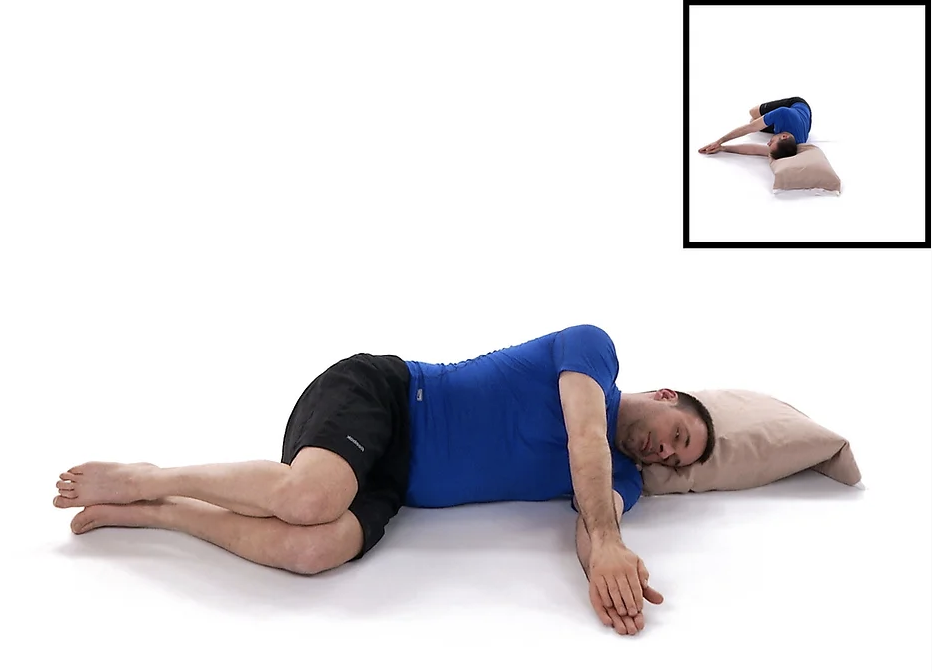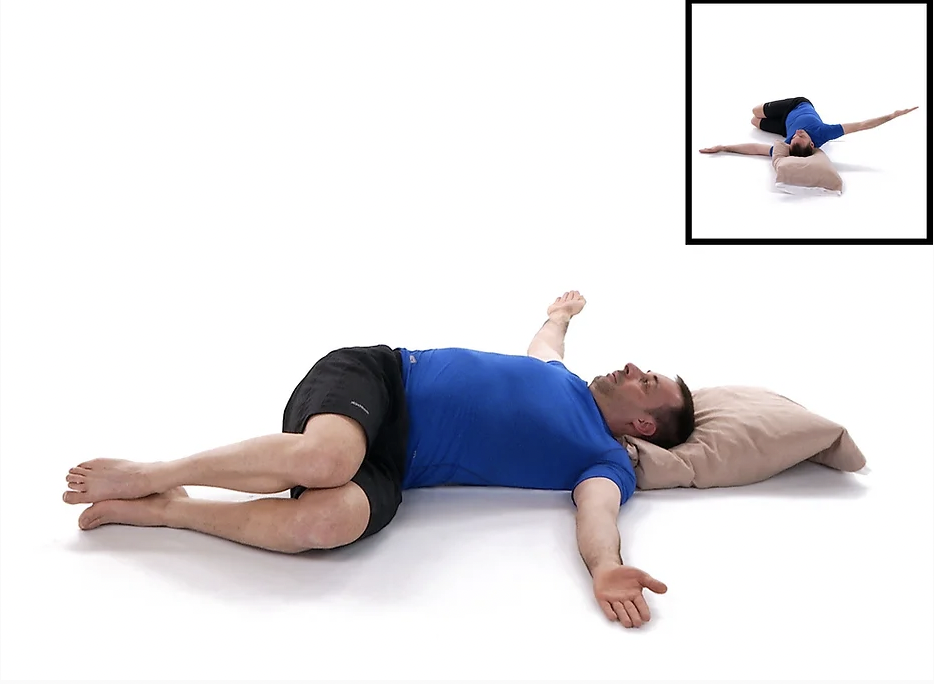The Thoracic Spine Domino Effect: Part 1
- Kate Mihevc Edwards PT, DPT

- Jun 12, 2023
- 6 min read
Updated: Jul 20, 2023
My past few blog posts were spent highlighting some muscles that have been historically overlooked in endurance athletes. With this blog series, I wanted to call attention to another under appreciated area of the body that usually does not receive the attention that it deserves: the thoracic spine. In Part 1, I will discuss the importance of thoracic mobility and part 2 will cover the effects that the thoracic spine can have on other body systems and how this might affect our performance and recovery.
The thoracic spine has certain nuances that differentiate it from other areas of our spine and has a prolific influence on daily function and athletic performance, particularly in runners. As an analogy of the power of the thoracic spine, I would like the readers to picture a line of upright dominoes in a row. The first domino in the line is representative of your thoracic spine. It has many connections to other joints of our body and is linked to many different bodily systems. A poor functioning thoracic spine could become the first domino to fall, creating a large, collapsing domino effect for the entire musculoskeletal, respiratory, cardiovascular, and nervous system.

What is the thoracic spine?
The thoracic spine is the mid-section of our spine, consisting of 12 vertebrae stacked on top of one another. Each vertebrae is named by number beginning at T1-T12 from top to bottom. This part of our spine serves as a transitional zone between our cervical spine, or our neck, and ends at our lumbar spine, our low back. The thoracic spine is the longest part of our spine and is the only part that has direct connections to our rib cage, creating a huge impact on our cardiovascular and respiratory system. Although it has not enjoyed the same attention as other parts of our spine in terms of research, this area has many vital functions and possesses the capability to contribute greatly to pain and various musculoskeletal dysfunctions. Some of the essential functions of our thoracic spine include providing spinal mobility, protection of our heart and lungs, assistance with breathing and optimal posture, and interaction with our autonomic nervous system.

How does it become dysfunctional?
The thoracic spine can become dysfunctional in various ways. More rare dysfunctions in this area can include muscle overuse throughout the thoracic spine, ligament sprains, thoracic vertebrae fractures, intervertebral disc pathology, degenerative changes, inflammatory or infectious disease, rib dysfunction, and/or cancers. The biggest dysfunction that we commonly see in clinic that can trigger the domino effect is STIFFNESS (i.e. hypomobility) of the thoracic spine.
Importance of Thoracic Mobility
Range of motion in the thoracic spine is necessary for a number of daily activities such as bending, twisting, breathing, and even full overhead shoulder motion. Adequate thoracic spine mobility is also extremely crucial in sports of all kinds, such as running, swimming, cycling, golfing, throwing, tennis, and the list goes on…This area of our spine is the inherently least mobile of our entire spine because of the attachment of the ribs. However, it should still have the capacity to move in each plane of motion. The motions that we most commonly need in our day to day lives include thoracic flexion, extension, and rotation. Possible contributors to a stiff thoracic spine include: repetitive awkward postures and movements that lead to forward flexed, slumped posture such as sedentary lifestyles, sitting throughout the day, and staring down at technology devices like laptops and smart phones. When you lack mobility in this region of the spine, it unfortunately can affect the function of the neck, shoulders, low back, pelvis, and even lower extremities, placing each of these areas at risk for overuse injuries. Poor mobility of this area can also contribute to increased neural tension elsewhere in the body, breathing dysfunction, and other postural issues. Mobility in this area of our spine is important for all individuals, but it is especially consequential in endurance athletes. For runners, specifically, we need adequate thoracic mobility to achieve efficient biomechanics in running form, improve deep core stabilization, maximize breathing capacity and mechanics, and allow our autonomic nervous system to optimize recovery.
Posture and Running Form
As aforementioned, the thoracic spine significantly affects our posture and running form. Optimal posture and positioning is one of the most important aspects of performance in all sports, but especially running. Ideal running posture has the rib cage stacked over the top of the pelvis with a slight forward trunk lean from the ankles. One arm should swing backward and the other arm forward, causing a rotation throughout the thoracic spine in the direction of the leg out front. We must have the adequate mobility in the thoracic spine to help facilitate this posture. If we aren’t able to attain this posture due to thoracic spine stiffness, it may predispose other areas up and down the chain to injury (i.e. areas above or below may be forced to move excessively!). Signs of a dysfunctional thoracic spine in running form include excessive movement through the low back, excessive rotation of the pelvis with each stride, increased movement of the arms across the body, which will impact our lower extremities. If these signs are present, there could be risk for low back pain, shoulder pain, pelvic dysfunction, hip pain, and other lower extremity injuries. Thoracic spine dysfunction may also limit the activation and function of deep core musculature, such as the transversus abdominis and diaphragm. Without these muscles functioning properly, "proximal stability: is compromised and we cannot generate as much power (think speed runners!) with our trunk, arms, and legs!
What can we do to prevent potential dysfunction?
There are many things that you can do to ensure optimal thoracic spine function. A great place to start is with thoracic spine mobilization exercises. We would always want to follow up our thoracic mobility exercises with strength and stability work to maintain results, but these exercises serve as a great starting point in gaining thoracic range of motion for extension and rotation. Thoracic mobility is something that I normally incorporate with ALL of my patients because of its direct relationship to so many areas of the body.
Below you can find two of my favorite thoracic spine mobility exercises that focus on getting the thoracic spine moving into rotation and extension, which are the two ranges of motion that are typically the most limited in individuals. These exercises are most helpful when done prior to activities, however, they will have a positive impact when performed at any time of day.
Reach and Roll
Begin laying on your side with your knees slightly bent, head supported by a pillow, and your arms stretched out front. In coordination with your breathing, inhale and reach your top arm forward. On your exhale, begin to rotate through your spine, allowing your arms to open reaching your top arm and shoulder blade down toward the floor. Hold this position for about 10 seconds and then return to starting position. Repeat for 10 repetitions on each side.
Thoracic Extension Over Foam Roller

Begin laying on your back with a long foam roller laying perpendicular to your body. It should be placed along your mid back (between shoulder blades or just slightly below), not in the region of the neck or lower back. In coordination with your breathing, inhale to prepare and exhale while your extend your back over the foam roller. Your hips should stay down on the floor and you should not be arching excessively throughout your low back. Hold this position for a few seconds and then return to starting position. You can then lower your body so that the foam roller is now positioned a segment or two above where it was before. Repeat the same process, working your way up the entire thoracic spine.
All individuals, but ESPECIALLY endurance athletes need adequate mobility and function of the thoracic spine to improve performance and decrease overall risk for injury. Try to avoid tipping over your thoracic spine domino and think about the importance of beginning to add these simple thoracic spine focused exercises into your routine to help optimize your performance and prevent injury. If you are having trouble getting your thoracic spine moving, we would be happy to help!
Stay tuned for Part 2 of this blog series where I will further discuss the profound impact that the thoracic spine has on other bodily systems including our respiratory, cardiovascular, and autonomic nervous systems.
Thanks for reading!
.jpg)








Comments